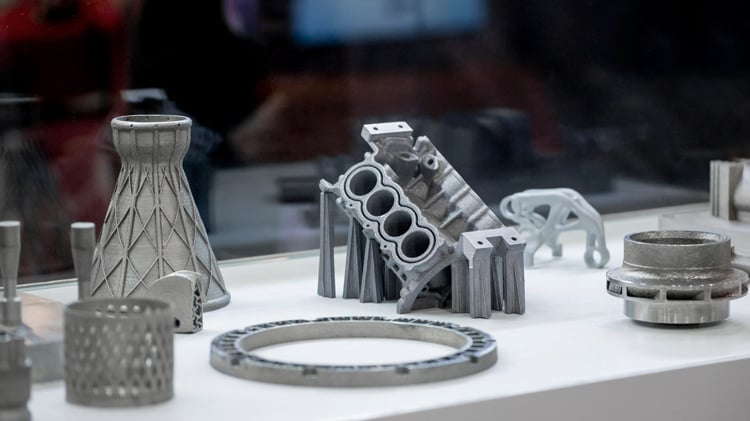The Coolest Products Made by Low-Volume Production in 2021
Low-volume production is a business strategy that has been around for decades, but it's gaining traction as consumers demand more personalized products. Some of the most notable examples are Apple's iPhone and Tesla Motors' electric cars. These highly sought-after goods can't be mass-produced like other consumer goods because they require customization at every stage.
Low-volume production allows businesses to produce their goods more efficiently and with higher quality control. According to the International Journal of Production Research, low-volume manufacturing companies are growing in number around the world due to "the increased demand for small batch sizes."
Whether you're a business owner looking for added productivity or a potential customer looking for something truly unique, low-volume production offers a great alternative to traditional mass-production.
Low Volume Production Definition
Low-volume production is the opposite of mass production. It is a way of manufacturing products in very low quantities.
Low-volume production increases the chances of creating a high-quality product by allowing manufacturers to focus on precision and attention to detail.
Thus, it is not surprising that many businesses are choosing low-volume manufacturing strategies as an alternative option for mass-producing their goods.
Why Choose Low Volume Production?
Low-volume production is great for companies that:
- want to create unique products.
- have a limited budget for production costs.
- require more flexibility in terms of speed and delivery dates, as well as customization options.
In low-volume manufacturing, engineers use resources efficiently to produce customized products with lower costs and less waste. There are many benefits of low volume production such as: increased safety margins during assembly; reduced need for inventory due to smaller batches; improved product quality through better inspection processes; and higher customer satisfaction rates from quicker delivery times.
Low-volume production can also help companies save money and time by reducing the costs of producing prototypes or samples. By using low-volume manufacturing strategies, companies can test market assumptions and determine the true value of a product before investing in mass production.
Best Low-Volume Production Products 2021
Low-volume production is gaining traction in the aerospace and automotive industries. As well, many smaller companies are starting to use low-volume production services.
Here are some top low-volume products that manufacturers can expect to see in 2021:
Electric Vehicles
Electric Vehicles in the 2020s and beyond will bring a dramatic change in transportation with electric vehicles (EV). EVs have no emissions, which means they’re better for air quality and the environment.
Whether you’re looking for a compact or crossover, electric vehicles will be one of the most popular low-volume products in 2021. Low-volume manufacturing strategies can be used to produce these vehicles in small batches, ensuring OEMs don't get caught with excess inventory. Famed car company Tesla says low volume production is the key to its success.
Lightweight Cars
Manufacturers are looking to low-volume production processes to produce lightweight cars that will offer greater fuel efficiency and better performance.
There’s a big push for alternative drivetrains, like EVs or hybrid electric vehicles (HEVs), which can reduce the weight of the car. Low-volume production can be used to produce components that are lighter in weight so the car will be more efficient after assembly. Watt Electric Vehicle Company, based out of Newquay, Cornwall, England, used low volume production with their PACES product (Passenger and Commercial Vehicle EV Skateboard).

Medical Prototypes
If you're looking to create new prototypes, low-volume production can be a great option.
With traditional prototyping, you have to wait for the prototype and there may only be one or two models at most before mass production begins.
Low volume manufacturing allows companies to create multiple prototypes as necessary so that testing can occur early on in the development cycle allowing any possible problems to be attended to before mass production. This will decrease the chances of a recall later on in the process and reduce costs associated with them as well.
An example of a product where low-volume manufacturing may make sense is medical device prototyping. A company might want to go through several iterations of prototypes before going into mass production to ensure that the product is safe and effective.
New Product Testing
We all know how difficult the supply chain can be to manage. Especially in 2021
Low volume production can help alleviate some of the burdens of supply chain issues by allowing for flexibility in the manufacturing process. This is especially true in industries with long supply chains such as those involved with mining, construction and automotive/trucking companies.
Apple recently used low-volume production for their latest Apple Glass product. To they cut back on the number of colors and sizes available in order to lower manufacturing costs while still allowing them to meet consumer demand.
Customized Or Limited Run Products
Not every product is right for mass production.
A customized product will often have a higher price tag and be produced in less quantity. A customized product might also require some additional design time to meet the customer's needs which can add even more costs. In these cases, it is important for companies to consider low-volume production as an option because it allows them to meet consumer demands without breaking the bank.
For businesses that deal in custom products, low volume production can be a cost-effective solution.
Designed for Discerning Customers
In short, low-volume production is a strategy that allows businesses to produce products in small quantities with the ability to make changes as needed. This strategy helps companies save money and meet consumer demands.
As low-volume production gains momentum, manufacturers will be able to produce high-quality items that are designed specifically with the customer in mind.
Manufacturers who want to position their products as premium goods should take advantage of low-volume manufacturing strategies and allow them to differentiate themselves from their competitors.
The future of low-volume production is bright with the value it offers manufacturers and customers alike.
RCO Engineering provides low-volume production services for all industries, including aerospace, automotive, medical devices, oil & gas exploration equipment and more! For more information on our capabilities or a consultation please contact us directly.


Comments